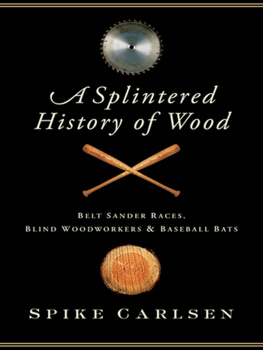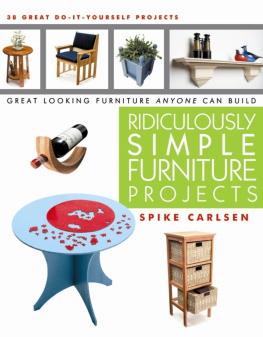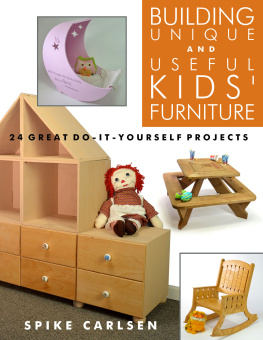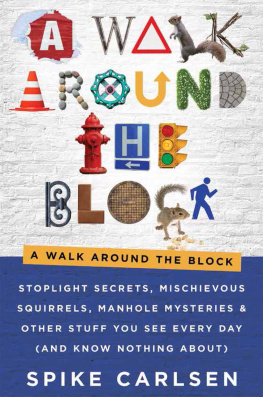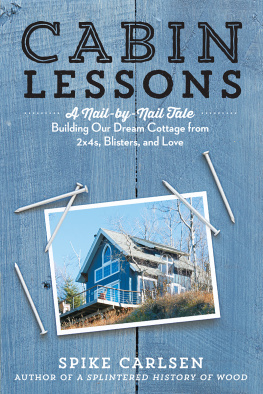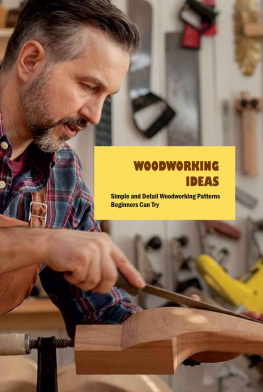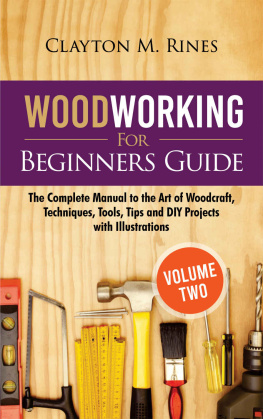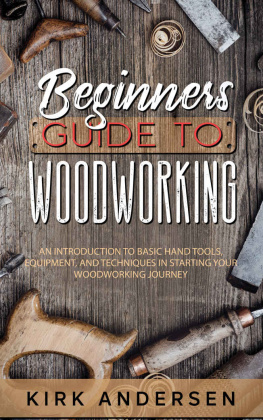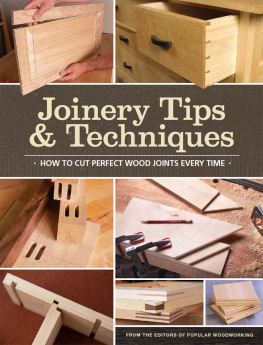Woodworking
FAQ
The Workshop Companion
Build Your Skills and Know-How
for Making Great Projects
Spike Carlsen

To my extraordinary kids
Tessa, Kellie, Zach, Maggie, and
Sarah, as well as Paige, Morgan,
Anna, and others who will
someday call me Poppy.
A huge thanks to Kat, the love
of my life and partner
in all things.
In the immortal words of that
great philosopher,
Randy Newman, you all...
give me reason to live,
you give me reason to live,
you give me reason to live!
The mission of Storey Publishing is to serve our customers by
publishing practical information that encourages
personal independence in harmony with the environment.
Edited by Nancy D. Wood and Lisa H. Hiley
Art direction and book design by Cynthia N. McFarland
Cover photography by Marcelino Vilaubi, except for
authors photo by Kat Carlsen
Technical assistance for photography by Nick Noyes
Illustrations by Melanie Powell
Indexed by Nancy D. Wood
2012 by Spike Carlsen
All rights reserved. No part of this book may be reproduced without written permission from the publisher, except by a reviewer who may quote brief passages or reproduce illustrations in a review with appropriate credits; nor may any part of this book be reproduced, stored in a retrieval system, or transmitted in any form or by any means electronic, mechanical, photocopying, recording, or other without written permission from the publisher.
The information in this book is true and complete to the best of our knowledge. All recommendations are made without guarantee on the part of the author or Storey Publishing. The author and publisher disclaim any liability in connection with the use of this information.
Storey books are available for special premium and promotional uses and for customized editions. For further information, please call 1-800-793-9396.
Storey Publishing
210 MASS MoCA Way
North Adams, MA 01247
www.storey.com
Printed in China by R.R. Donnelley
10 9 8 7 6 5 4 3 2 1
Library of Congress Cataloging-in-Publication Data on file
CONTENTS
A NOTE ABOUT SAFETY
Woodworking is both intrinsically rewarding and inherently risky. The same tools that cut and shape the wood can do the same to you. Read and follow the instructions and guidelines that come with the tools and materials you use and, above all, use common sense. Theres always more than one way to tackle a task; if youre uncomfortable using a certain tool or performing a certain procedure, find an alternative way of getting the job done. Remember, with the proper tools, attitudes, and work habits, woodworking can be a safe, enjoyable, lifelong pursuit.
Introduction
When you hear the word woodworking, what image springs to mind? That of some bearded old gent toiling away with a hand plane? Or some brawny soul standing in front of a large, complicated machine? The world of woodworking does encompass those scenarios, but it includes more than that. In fact, theres a good chance it includes YOU. If youve ever built a birdhouse, repaired a wobbly chair, or installed shelves in your closet, youre already a woodworker. You may not be Norm Abram of The New Yankee Workshop fame, but you (like 15 million others in America) still get to call yourself a woodworker.
Woodworking is a bit like cooking: Even though some people may be more experienced at it, spend more time at it, or have fancier equipment than you, that doesnt prevent you from rolling up your sleeves and cooking away. The more you cook, the better you get. You might have a few souffls that fall, but you have plenty of victories, too. You buy higher quality equipment as you need it and more cookbooks as you forge into new territories. So it is with woodworking: You start with the basics, build your arsenal of tools and skills, then move on to more challenging projects as you improve. This book will help you do just that.
In days gone by, woodworking wisdom was often passed down through the generations, or at least from shop teacher to student! As this happens less and less, the need for a book that addresses your basic woodworking questions arises more and more. This book is packed with practical information for all skill levels. If youre a beginner, it will help answer the most fundamental questions: Which wood should I use for this bookcase? Which direction do I move my router? Why do I need three different grits of sandpaper? How do I clamp a picture frame? If youre an intermediate woodworker, youll find lots of information to help you improve your woodworking skills. And even if youre an advanced crafts-person, theres still plenty of useful information in the answers, tips, charts, and projects herein.
This book does not attempt to answer every woodworking question ever asked, nor does it attempt to answer every question completely. If it did, it would take a forklift to move around. Rather, our goal is to address the most common questions and misperceptions about woodworking, present the basics so you can decide whether or not to move forward, then direct you to other sources for more information. While the book is broken down into 13 chapters, most questions could fit in more than one category. For instance, the information on edge-gluing boards could easily fall into three or more chapters. So we encourage you to use the index and table of contents to track down the information youre looking for.
The realm of woodworking is chock-full of opinions regarding which woods, tools, and techniques are best. Thats part of what makes things interesting! If you want to spark a lively debate among a roomful of woodworkers, just ask them about the best way to mount adjustable shelves in a bookcase, install trim around a window, or finish a dining room table. Every woodworker, wood, and project is different. But weve drawn upon the experience and know-how of some of the best woodworkers in the field to help sort out fact from fiction. So carve ahead, and good luck in all of your projects.
ACKNOWLEDGMENTS
Ive been working with, writing about, and learning about wood and woodworking for over 30 years. Yet in the process of writing this book, I realized how much I had yet to learn.
Thus I owe a great deal of gratitude to a group of exemplary woodworkers and teachers who were willing to share their experience and knowledge. Thanks to Dave Munkittrick, for his deft woodworking and reviewing skills; Tom Caspar, of American Woodworker magazine, for his insights on hand tools and sharpening; Allan Lacer, woodturner extraordinaire, for his expertise on turning; Mitch Kohanek, instructor of the National Institute of Wood Finishing at the Dakota County Technical College; Ken Collier and Travis Larson, of The Family Handyman magazine; Bruce Kiefer, Tim Johnson, Dick Thorngren, and Jim Adami woodworkers extraordinaire; and others too numerous to name.
And a great deal of thanks to the team at Storey Publishing: a group that both talks the talk and walks the walk.
1 Setting Up Shop
Use what talents you have; the woods would have little music if no birds sang their song except those who sang best.
REVEREND OLIVER G. WILSON
Your workshop doesnt have to be a 500-square-foot building full of $500 tools. In fact, most woodworkers do well with far less. The corner of a garage, a room in the basement, or an unused outbuilding will work just fine for most people. Dont have even that much space? Well, perhaps you can take heart from this apartment dweller: a fellow who loved woodworking so much he set up his lathe on the kitchen counter so he could turn pens and small bowls. He disposed of his waste in the garbage disposal and played polka music whenever he worked, so his landlord downstairs couldnt hear the thumping of the lathe. The main thing is to have a space thats safe to work in and conveniently organized, and there are lots of ways to do that. Here are some of the basics.


